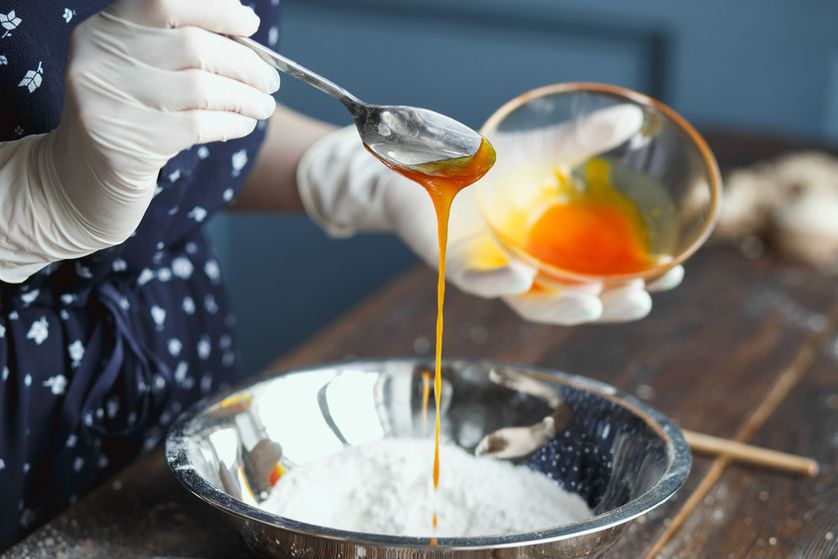
Bath Bombs: Where Body Care Meets Your Kitchen
Share

So many common kitchen staples have great non-culinary uses. Vinegar makes a great cleaning solution. Baking soda is great for polishing flatware. Supposedly vodka makes a good insect repellent.
How many of us love bath bombs? Those spherical balls that smell so amazing and fizz away in your bathtub, leaving your skin feeling silky smooth. Those things you play with at those luxury body boutiques in their fancy porcelain sinks. You know, those things that cost between $6 and $10 each, and are a one-time use only. We all love those things, but let’s be real, we hate the cost.
But did you know you probably already have most, maybe all, of the ingredients and tools in your kitchen to make them? At the very least, they’re easy to find!
When you read the ingredient list on a bath bomb, I guarantee the first two ingredients you’ll see are citric acid and sodium bicarbonate. Sodium bicarbonate, as you may know, is the scientific name for baking soda! And I know you have baking soda, especially if you’re an avid baker. For the other components, you probably also have cornstarch, some kind of oil, and muffin tins.
Do you partake in canning? You probably have citric acid powder. If not, you can easily get it at places you buy canning equipment, beer making equipment, spice shops, and I’ve even seen it at Whole Foods. You can also get a 5-pound bag on Amazon for about $14.
So if that’s all it takes to make them, how does one get them to fizz? Well citric acid is a dried acid in crystalline salt form, with a pH level of about 2.2 (remember, it is an acid). When mixed with baking soda and dropped in water, the citric acid turns liquid, which reacts with the baking soda, aka sodium bicarbonate, which is a base with a pH level of about 9. This reactions causes the whole bath bomb to release carbon dioxide and fizz! And because citric acid is a salt, it is great for gently exfoliating your skin.
So where do the oils and cornstarch come in? The oils are the binding ingredients that will hold everything together without causing the bath bomb to activate. Any neutral kitchen oil is fine for this, but the best oils for your skin are avocado, almond, or melted coconut oil. In fact, if you can find vitamin E oil at your local health food store, you can substitute up to 1 tablespoon of your neutral oil for vitamin E oil, which does wonders for your skin.
The cornstarch is an anti-humectant, meaning it absorbs any arrant moisture that may enter the bath bomb. This is especially important if you want to color your bath bomb, as most coloring agents have at least a little water in them. If you are going to color your bath bombs, I highly recommend using a gel based food color, as it does not contain as much water.
Bath Bombs make great gifts, and you’ll be able to make so many bath bombs, you’ll never need to buy them again!
Bath Bombs Ingredients
- 1 cup citric acid
- 1 cup baking soda
- ½ cup cornstarch
- ¼-½ cup neutral oil of your choice (coconut)
- A few drops of your favorite essential oil scent, gel based food coloring, and vitamin E oil.
- In a large bowl, whisk together the citric acid, baking soda, and cornstarch.
- If you’re planning to use essential oil, coloring, or vitamin E oil, stir it into your neutral oil. Pour your wet ingredients into your dry ingredients and stir well until it is the consistency of wet sand.
- To shape them, simply press them into muffin tins, silicone molds, or just roll them into balls using your dry hands. Let them sit overnight to harden.
- To remove them out of the mold, simply invert over a sheet of parchment or wax paper. They should easily pop out. To use, simply toss into a warm tub, jump in, and enjoy the effervescence!
Head over to Bubbly Belle to order some of our one-of-a-kind bath bombs.

